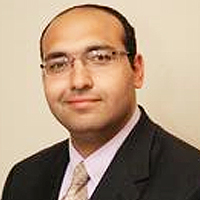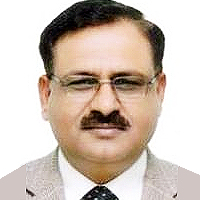The Role of Mitochondria in Chronic Wound Healing (Mitotherapy): Signaling and Therapeutic Implications
Published on: 31st January, 2025
Mitochondria are essential intracellular organelles that significantly influence various cellular processes, including metabolism, stress response, and cell fate. Their precise regulation is crucial for maintaining both organelle and cellular homeostasis. Wound healing is a complex, multifactorial process that relies on the coordinated actions of multiple cell types and numerous cellular mechanisms. Dysregulation in this process can lead to chronic wounds, which pose substantial challenges for healthcare systems and present limited treatment options due to their intricate pathogenesis. Recent research has increasingly focused on the role of mitochondria in wound healing, revealing their involvement in critical processes such as metabolism, apoptosis, and redox signaling. Mitochondrial dynamics play a vital role in wound healing by adapting to cellular demands and environmental cues. Moreover, mitophagy, the selective degradation of damaged mitochondria, is crucial for maintaining mitochondrial integrity and function during the healing process. Mitochondria are not only pivotal in energy production but also in calcium homeostasis and the generation of mitochondrial reactive oxygen species, which are essential for signaling during wound repair. As wound healing progresses through distinct yet overlapping stages mitochondria facilitate the energy demands of repair and contribute to cytoskeletal remodeling necessary for wound closure. Understanding the multifaceted roles of mitochondria in wound healing could lead to novel therapeutic approaches for chronic wounds. Future research should prioritize investigating mitochondrial dynamics and functions in human tissues to develop targeted strategies for enhancing wound healing outcomes.
Chaos to Cosmos: Quantum Whispers and the Cosmic Genesis
Published on: 4th February, 2025
Quantum fluctuations, usually arising from the inherent uncertainty in the quantum fields, are pivotal in understanding the universe at both the small and large scales. Even though fluctuations are usually unobservable and rather small, they give significant observable effects during specific epochs under specific conditions. During the early epochs of the universe, the fluctuations were scaled, resulting in the primordial density perturbations that gave rise to the large-scale structure of the universe and the observed inhomogenities. In this paper, we study the basic origin, structure, evolution, and imprints of fluctuations during the inflationary period resulting in large-scale structure formation. We use the Mukhanov-sasaki formalism to model scalar perturbations, embedding the theoretical results into observations. Theoretical predictions show an almost scale-invariant power spectrum with stringent constraints on the inflationary parameters. It further states that in the very early universe, the inflatons that are quanta of the primordial field were highly filled in the degenerate quantum state. This carries large potential energy that results in an exponential expansion of the universe. During post post-inflationary period the inflaton dominated the Universe’s energy density; they interact among themselves and due to non-linear effects, these inhomogeneities grow which amalgamate into spatially distinguishable patches in our observable universe. Our understanding projects us towards the fact that fluctuations play a pivotal role in understanding the structure formation at micro, macro, and far-macro scales. This study also addresses the significance of quantum fluctuations in cosmic evolution and manifests the enduring relevance in addressing some of the profound mysteries of our universe.
Unveiling the Impostor: Pulmonary Embolism Presenting as Pneumonia: A Case Report and Literature Review
Published on: 5th February, 2025
Pulmonary Embolism (PE) can present with symptoms resembling pneumonia, creating a diagnostic challenge, particularly in patients with comorbidities. We report the case of a 67-year-old male who presented with cough, hemoptysis, shortness of breath, fever, and pedal edema. Initially diagnosed with consolidation based on chest X-ray findings, he was treated with antibiotics. However, persistent symptoms prompted further evaluation, leading to the diagnosis of PE with pulmonary infarction and deep vein thrombosis on computed tomography pulmonary angiography and Doppler ultrasound. This case highlights the need to consider PE in the differential diagnosis of consolidation, particularly in high-risk individuals, to avoid delays in appropriate management.
Practical implementation of the SWEEP-session of Stimulation-Registration in CI fitting
Published on: 11th October, 2017
OCLC Number/Unique Identifier: 7325438281
Levels of electrically evoked stapedial reflex thresholds (eESRTs) are frequently used as most comfortable levels (MCL) in cochlear implant fitting. The problem of routine one-channel-technique of reflexometry is long duration of this procedure. In order to “compress the time” we suggest method of consecutive stimulation of all electrodes of implant with simultaneous registration of stapedial reflexes-SWEEP-session. Practical implementation of the SWEEP-session is described here. This method has been successfully used in several hundred CI patients. Registration of evoked electrical stapedial reflex thresholds (eESRTs) during CI fitting is long procedure. In order to “compress the time” we suggest our SWEEP-session method. Practical implementation of this SWEEP-session is described here in accordance with the patent of Russian Federation.
Impact of the MELD Scale on Hospital Admissions for Hepatocarcinoma (2000 to 2018), Brazil
Published on: 14th March, 2025
Background: The health professional appears to be concerned given the number of questions surrounding the patient’s post-transplant survival, patient selection method, and the continuous search for scores that reflect their reality and reconcile the results they desire with the patient’s expectations. It is from these considerations that the present work was born with the purpose of understanding the reality of patients hospitalized for hepatocellular carcinoma and what adherence to the Model For End-Stage Liver Disease (MELD) criteria meant in Brazil. Methods: This study is a discrete, univariate time series on emergency hospitalizations that occurred between 2000 and 2018, in the city of São Paulo, Brazil. Python version 3.11 was the software used for statistical treatment and analysis of the time series. Results: There were 6887 hospitalizations for malignant neoplasm of liver and intrahepatic bile ducts, in the period 2000-2006, of which 2898 were elective and 3915 (56.85%) were urgent in the period. There was an increase of 63.97% in the number of emergency hospitalizations in relation to the period 2000-2006 and 2007-2013. To highlight, in 2013 there were 1270 emergency admissions, which represented an increase of 109.22% in relation to the number of emergency admissions in 2006. The contingency correlation analysis demonstrated a significant association between the variables in which the chi-square value was 82.18, the p-value was 1.24 x 10-19, and the critical value was 3.84 with one degree of freedom. There was a 123.65% increase in the number of hospitalizations for chronic hepatitis, not elsewhere classified, between the periods 2000-2006 and 2007-2013. The chi-square value of the contingency association was 221.22, with a p-value of 4.90 x 10-50, a critical value of 9.488, with a significance level of 5% and one degree of freedom. The study showed an increase in hospitalizations of 21.88% for alcoholic liver disease between the periods 2000-2006 and 2007-2013. In the period 2000-2006, there were 21330 hospitalizations, 19224 of which were urgent (90.13%). In the period 2007-2013, there were 25997 hospitalizations, of which 22,802 (87.71%) occurred urgently. The chi-square value was 68.95, the p-value was 1 x 10-16, and the critical value was 3.84, with one degree of freedom. Conclusion: The MELD score, as it is sensitive to the patient’s severity, selects those who are at an advanced stage of the disease for liver transplantation. In this scenario, patients do not necessarily have access to outpatient services and begin to attend them regularly when MELD identifies the advanced stage of the disease, opening a gap between prevention, treatment, and rehabilitation.
Causal Inference for Scoliosis and Strabismus: A 2-sample Mendelian Randomization Study
Published on: 24th July, 2024
Background: Some studies have shown an association between spinal curvature and strabismus, but the genetic association has not been clarified. Therefore, the present study is proposed to be a Mendelian randomization study aiming to investigate the genetic causal association between spinal curvature and strabismus.Purpose: Genetic causal associations between strabismus, convergent concomitant strabismus (Ccs), Divergent concomitant strabismus (Dcs), Other specified and unspecified strabismus (Osus), Other strabismus (Os) and spinal curvature were investigated by a bidirectionalMendelian randomization study to provide a basis for the prevention and treatment of spinal curvature.Methods: Significant and independent Single Nucleotide Polymorphisms (SNPs) in genome-wide association studies were selected as Instrumental Variables (IVs) for Mendelian Randomization (MR) analysis. Inverse Variance Weighted (IVW), MR-Egger regression, Weighted Median (WME), Simple Mode (SM), and weighted mode (WM) were used to analyze causal association; Heterogeneity and multiplicity tests were also performed and analyzed using the leave-one-out method to assess the stability of the results.Results: MR and reverse MR were utilized to assess the impact of scoliosis on strabismus, revealing that the 95% confidence intervals of all instrumental variables’ OR values spanned 1 and the p values were all above 0.05. These results indicate a lack of evidence supporting a causal relationship between scoliosis and strabismus. Conclusion: There is currently no conclusive evidence of a genetic causal relationship between scoliosis and strabismus, including their subtypes. Further laboratory studies are needed to confirm these findings, and future research with larger sample sizes is necessary to provide more robust support.
A Further Example Showing Efficiency of a Modeling Method Based on the Theory of Dynamic Systems in Pharmacokinetics
Published on: 25th January, 2017
OCLC Number/Unique Identifier: 7317655701
Aims: To present a further example showing an efficiency of a modeling method based on the theory of dynamic systems in pharmacokinetics.
Study design:The goals of the current study were twofold: to present (1) a further example showing efficiency of a modeling method based on the theory of dynamic systems in pharmacokinetics, an to perform (2) a next step in tutoring the use of computational and modeling tools from the theory of dynamic systems in pharmacokinetics.
The data available in the study by Plusquellec et al. published in the October Issue of the Journal Medical Engineering & Physics were used to exemplify the method considered here. For modeling purpose an advanced mathematical modeling method was employed. Modeling was performed using the computer program named CTDB described in the study by Dedík et al. published in September 2007 issue of the Journal Diabetes Research and Clinical Practice.
Main outcome: Modeling results revealed that computational and modeling tools from the theory of dynamic systems can be successfully used in the development of a mathematical model of such a complicated process as is a multiple sites discontinuous gastrointestinal absorption.
Generalized Trace Inequalities for Q Uncertainty Relations
Published on: 20th August, 2024
Iin 2015 we obtained non-hermitian extensions of Heisenberg type and Schrödinger type uncertainty relations for generalized metric adjusted skew information or generalized metric adjusted correlation measure and gave the results of Dou-Du in 2013 and 2014 as corollaries. In this paper, we define generalized quasi-metric adjusted Q skew information for different two generalized states and obtain corresponding uncertainty relation. The result is applied to the inequalities related to fidelity and trace distance for different two generalized states which were given by Audenaert, et al. in 2009 and 2008; and Powers-Strmer in 1970. 2010 Mathematics Subject Classification: 15A45, 47A63, 94A17.
Natural and effective ways of purifying lake water
Published on: 29th June, 2017
OCLC Number/Unique Identifier: 7286425793
Water resources play an integral part in the life of a living being. The various water resources that are present on the earth’s surface are in the form of oceans, seas, lakes, rivers, ponds, waterfalls etc. Among these water resources Lakes and reservoirs are vital for people’s life, industrial activities and many other day to day activities. These water resources help in obtaining water for drinking after being treated. They also provide water for agriculture and industrial usage, fishery resource, flood control functions and many other activities. Due to the closed nature of lakes’, the waste material from sewage, agricultural effluents, domestic and industrial fields, gets accumulated around the surface of these water resources and once the water gets polluted, it gets strenuous to improve the quality of the water. In the study, the authors have examined different effective ways by which the quality of lake water can be improved.
Techno-econophysics’ Fractal Involving of Exergy Remarks
Published on: 4th September, 2024
Inclusively new to econophysics studies, herewith proposed technoeconophysics as part of techno-economy, econophysics & sociophysics to interpret the description between probability and hypothesis found between fractal realms and econophysics of markets, physics markets, or stock markets any chaotic evidence [exergy destructive] could present if effective & efficient criterion doesn’t comply. A more precise iterative study ought to be held to configure how fractal dimension is involved in the techno-econophysics study of the Helium Nat Gas Project which is not integer, but also proofed numerically & analytically.
















